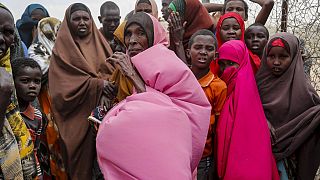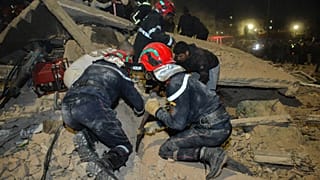Climate
A massive cloud of dust from the Sahara Desert settled over the Caribbean on Monday, as it made its way from Africa to the United States.
The cloud extended some 3,200 kilometers from Jamaica to well past Barbados in the eastern Caribbean, and some 1,200 kilometers from the Turks and Caicos Islands in the northern Caribbean down south to Trinidad and Tobago.
“It’s very impressive,” said Alex DaSilva, lead hurricane expert with AccuWeather.
The dust concentration was the highest recorded this year at .55 aerosol optical depth, said Yidiana Zayas, a forecaster with the National Weather Service in San Juan, Puerto Rico. The aerosol optical depth measures how much direct sunlight is prevented from reaching the ground by particles, according to the US National Oceanic and Atmospheric Administration (NOAA).
In Puerto Rico, the dust unleashed sneezes, coughs and watery eyes across the island. Local forecasters warned that people with allergies, asthma or other conditions should stay inside or wear face masks when they went outdoors.
For ice cream vendor Antonio Gutierrez, however, it was business as usual.
"Well, this looks very, very strong, but as I said, it doesn't affect me because I've already been here for two years, working on this corner, and it's always the same. A lot of dust, a lot of dust. You have to deal with it."
'Absolutely crazy'
Conditions were similar in Christ Church on the island of Barbados, with the dust blocking out sunlight and covering cars.
The dry and dusty air known as the Saharan Air Layer forms over the Sahara Desert in Africa and moves west across the Atlantic Ocean starting around April until about October, according to NOAA. It also prevents tropical waves from forming during the Atlantic hurricane season, which runs June 1 to Nov. 30. June and July usually have the highest dust concentration on average, with plumes traveling anywhere from 1,5 to 6 kilometres above the ground, DaSilva said.
"The fact that the dust travels all the way here from Africa and affects us so heavily is absolutely crazy," said Christ Church resident Aaliya Weekes, "because the distance between Barbados and Africa is vast."
In June 2020, a record-breaking cloud of Sahara dust smothered the Caribbean. The size and concentration of the plume hadn’t been seen in half a century, prompting forecasters to nickname it the “Godzilla dust cloud.”
The plume is expected to hit the US states of Florida, Louisiana, Alabama and Mississippi later this week.












00:46
Snowfall revives the Atlas Mountains, bringing hope to residents and farmers
01:11
Algeria sees more than 22 wildfires in 8 provinces as southern winds see temperatures soar
01:10
Relief supplies arrive after Hurricane Melissa devastation
01:00
Storm season hits Vietnam: Hoi An heavily flooded, mass evacuations underway
01:43
Morocco prepares for busy tourist season after record influx of visitors
Go to video
UN warns: Global CO2 levels hit record high, fueling extreme weather